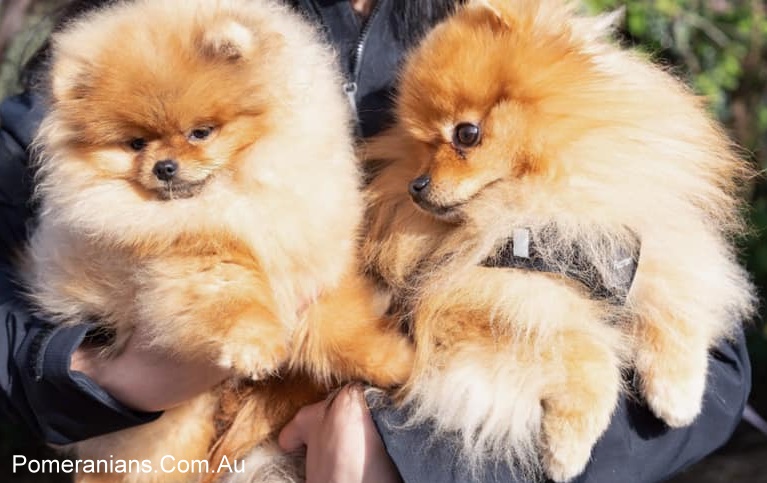Pomeranian Breeder Interview:
Q.1. How long have you been breeding Pomeranians? Why are they your chosen breed?
A. Since 1975. I was fortunate to have a Great Aunt who bred and exhibited Champion Pomeranians. My fondest childhood memory was nursing her Champion Pomeranian on the way home from shows. Filled with happiness, I became extremely passionate about the breed and dreamed of one day filling my life with Show Pomeranians.
Q.2. How do you feel the standard of Pomeranians today compares with say 10 years ago?
A. The quality of the Pomeranian has improved tremendously during the past 10 to 15 years. The top winning Pomeranian in Australia are now equal in quality to those exhibited at the World’s major shows.
Q.3. Do you think size is a problem in Pomeranians?
A. The Pomeranian Breed standard “Ideal weight: Dogs 1.8-2 kg (4-4.5 lbs.). Bitches 2-2.5 kg (4.5-5.5 lbs.) “. It is not unusual to observe males larger than required by the Pomeranian breed standard and females considerably smaller. The Pomeranian Breed standard does not mention height.
Q.4. There have been many imports here in the breed over recent years, do you think they have had a positive impact?
Yes, the many imported Pomeranians have made a very positive impact, with the overall quality of the Pomeranian improving dramatically within a short time frame. Unfortunately along with the good, almost always there is the bad. The coat loss problem we now have in the breed presents a huge challenge for Pomeranian breed custodians.
Q.5. Could you list in order of priority the 5 most important points you think a judge should look for in the Pomeranian?
1. Breed type. The very essence of the Pomeranian. A Pomeranian which looks, moves and acts in a manner closely conforming to the breed standard.
2. Soundness and balance. The Pomeranian should be sound in composition and action.
3. Coat. The Pomeranian’s coat contributes tremendously to the breed’s visual appeal. As a Nordic breed the requirement of a harsh double coat should never be ignored. A soft, cotton type coat is undesirable on an adult Pomeranian. A Pomeranian puppy’s coat may be dense, shorter and may or may not show guard hair.
4. Tails. A characteristic of the breed. The tail should be carried high and flat over the back. A lower tail set than desired spoils the outline of the Pomeranian.
5. Heads. Without a good head you have “just a Pomeranian”. Breeding a Pomeranian with a classic head can be challenging as head characteristics tend to be highly heredity. Inferior heads will plague a breeding program for many generations. A good Pomeranian head needs to be wide at the back of the jaw and come gradually to a fine muzzle. A long muzzle and you lose the essential wedge and the Pomeranian will have a shepherd like appearance. If the jaw is too short, the Pomeranian will possess a muzzle similar to a Chihuahua. The skull should not be round domed in shape. The Pomeranian’s head must have a moderate stop. Ears should be small and well placed ( not set too low down ). Eyes should be dark and most importantly, almond shaped. Incorrect eye shape and that important Pomeranian expression is lost.
Q.6. What is your ‘pet hate’ when looking at a Pomeranian, and what do you think is the hardest fault to breed out?
My pet hates are faulty front movement and unsound rears.
The hardest fault to breed out seems to be incorrect front structure.
Colours Our current breed standard is ambiguous concerning the colour section. My personal opinion is simple, a good dog can never be a bad colour.

Orange Dochlaggie Pomeranians
Copyright Pomeranian.Com.Au. All Rights Reserved.
